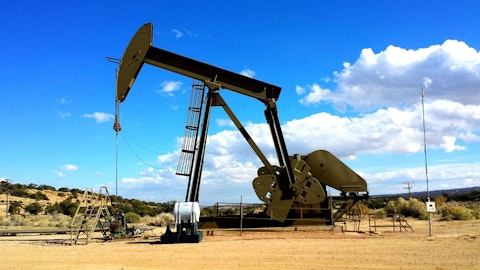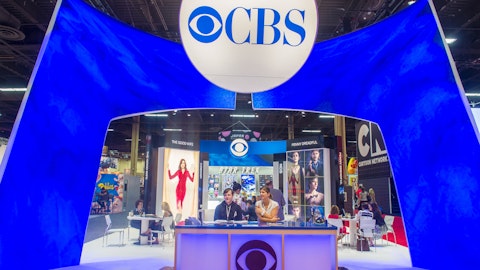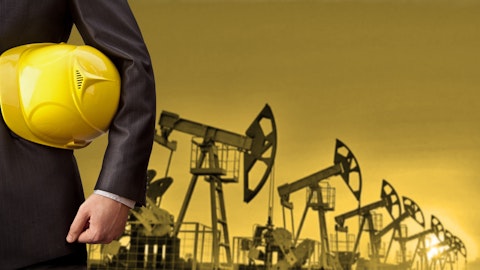Dividend Safety Analysis: Chevron
We analyze 25+ years of dividend data and 10+ years of fundamental data to understand the safety and growth prospects of a dividend. Chevron’s dividend and fundamental data charts can all be seen by clicking here.
Our Dividend Safety Score answers the question, “Is the current dividend payment safe?” We look at factors such as current and historical EPS and FCF payout ratios, debt levels, free cash flow generation, industry cyclicality, ROIC trends, and more.
Dividend Safety Scores range from 0 to 100, and conservative dividend investors should stick with firms that score at least 60. Since tracking the data, companies cutting their dividends had an average Dividend Safety Score below 20 at the time of their dividend reduction announcements.

Chevron’s Dividend Safety Score is 25, which indicates that the dividend is risky based solely on the company’s fundamentals. When Conoco Phillips cut its dividend earlier this year, it had a Safety Score of 17.
However, Chevron’s management team publicly remains very committed to the dividend. Here is Patricia Yarrington, the CFO, on the Q2 2016 earrings call (1):
“Our financial priorities remain unchanged. We’re committed to growing the dividend as earnings and cash flow permit. We recognize the value our shareholders place on dividends and the value they place on our long term annual dividend payment increases.”
Source: Seeking Alpha
She further elaborated on the importance of the dividend:
“…we’ve had the same financial priorities for a long time. Dividend return to shareholders being first, and then reinvestment in the business second, and then having a prudent financial structure being third. And I don’t see those priorities changing going forward.”
Source: Seeking Alpha
Chevron’s quarterly dividend has remained frozen (2) at $1.07 per share for 10 quarters, highlighting the pressure the business is under.
Let’s investigate some of the key ratios (3) and drivers of the Dividend Safety Score to determine if the dividend is at risk of a cut.
Currently, analysts expect Chevron to generate EPS of $1.29 for Fiscal Year 2016, and we expect the company to pay out about $4.28 per share in dividends this fiscal year (assuming no dividend increase or cut from 2015 levels).
This implies a payout ratio of about 232%. Clearly that is unsustainable. Even looking out to next year when analysts expect Chevron to earn $5.24 per share, a stable dividend would imply a payout ratio of 82%, which is well above the historical levels.

Source: Simply Safe Dividends
The company did not generate positive free cash flow in 2015 and is not generating positive free cash flow year-to-date in 2016 either.
So far this year, Chevron has used $14 billion of cash on capital expenditures ($10 billion) and dividends ($4 billion) while only generating $3.7 billion in cash from operations.
These payout ratios are not healthy for a cyclical oil and gas business and could indicate a dividend cut is on the horizon if the company cannot continue raising funds in other ways.
As of the end of Q2 2016, the Chevron had about $9 billion in cash and marketable securities on its balance sheet. This cash position was offset by $5.53 billion in short term debt and about $39.5 billion in long-term debt.
On an annualized basis, the company will spend about $8 billion dollars on dividend payments. Therefore, Chevron only has enough cash to fund about half a year’s worth of dividend payments.
In order for the company to maintain the dividend when it is not generating positive free cash flow and doesn’t have the cash balance, they need to drastically improve the cash position on the balance sheet. They are doing this through asset sales, capital expenditure cuts, SG&A and operating expense reductions, and borrowing money.
So far this year, Chevron has sold assets worth about $1.4 billion dollars and is targeting asset sales of $5-10 billion dollars for 2016-2017. While this could incrementally help fund the dividend, it is not and cannot be a multi-year solution.
Another focus area for management is reducing capital expenditures and expenses.
Capital expenditures are trending lower so far this year with spending down to $10 billion versus the 2015 level of $15.2 billion through the first six months.
Furthermore, for 2017-2018 management is guiding for capital expenditures to be in the range of $17 – $22 billion. This is a huge step down from the $29.5 billion, $35.4 billion, and $38 billion spent in 2015, 2014, and 2013, respectively.
While not as drastic as the capital expenditure cuts, management has been reducing SG&A and operating expenses as another way to preserve cash. Through the first six months of 2016, SG&A is down about $100 million to $2 billion dollars, and operating expenses are down about $1 billion to $10.5 billion.
Patricia Yarrington, the CFO, spoke about this cost line-item on the most recent earnings conference call (4):
“Year-to-date operating expense is also down, down 8% when compared to 2015. And we expect a downward quarterly trend to continue in the second half of this year, as we realize the full-year run rate of organization actions and supply chain initiatives.”
Source: Seeking Alpha
These initiatives by management are not enough to get the company cash flow positive in the near term, so the way management plans to fund the dividend while generating negative free cash flow is through additional borrowings.





